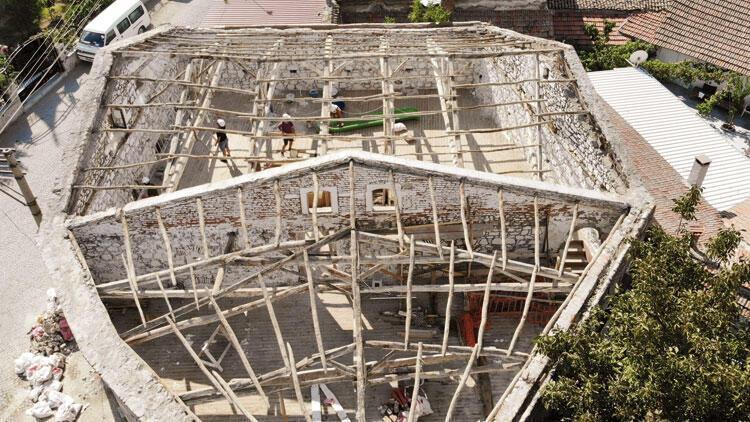
Teams of volunteer architecture students led by a Spanish academic have been working hard to turn a desolate tobacco depot into a culture center in Turkey’s Aegean district of Bergama in İzmir province.
Jose Manuel Garcia Torres, an instructor at the Yıldız Technical University in Istanbul, joined forces with Italian gastronomist and teacher Gabriel Castellana to buy a 150-year-old building in Bergama, an inland district some 100 kilometers north of İzmir city five years ago, starting the Depo Pergamon cultural center project.
“After buying the historical tobacco warehouse, Gabriel and I decided that this place could be a cultural center representing the Mediterranean culture,” Torres said.
“In the meantime, students were asking about a place to do internship all the time because they were facing a difficulty to find a place due to the crisis in the construction sector. Collective work is very common in Spain. I told them about the warehouse. ‘We are coming too,’ they said and embraced the project. There were many paper works with the council of monuments, and many other things to do on the field. We started the project all together with my academic friends and the students,” he added.
Bergama district municipality also supported the project by granting them access to the waste yard and allowing them to recycle some thrown away tables, chairs and tiles, Torres added.
Workshops
The workshops organized at the warehouse have attracted many other students from architecture, graphic design, urban planning and restoration departments of various universities.
Some academics from Spain and Italy have also contributed to the project, which will be carried on with a few building workers during the winter.
“This is a process of learning and producing together. We are not in a rush to complete the work. We will open the center in a year or two,” said Torres.
The first settlement in the town of Bergama (Pergamon) dates back to the eighth century B.C. The city, founded on a 330-meter high hill where the ruins of the acropolis can be seen today, was first ruled by the Persians and Alexander the Great. It became a glorious kingdom between the years of 283-133 B.C.
The Asklepion ruins are home to one of the most ancient medical centers. It is also the first place where the rod of Asclepius, consisting of a serpent entwined around a staff, was used as the symbol of medicine and pharmacy.